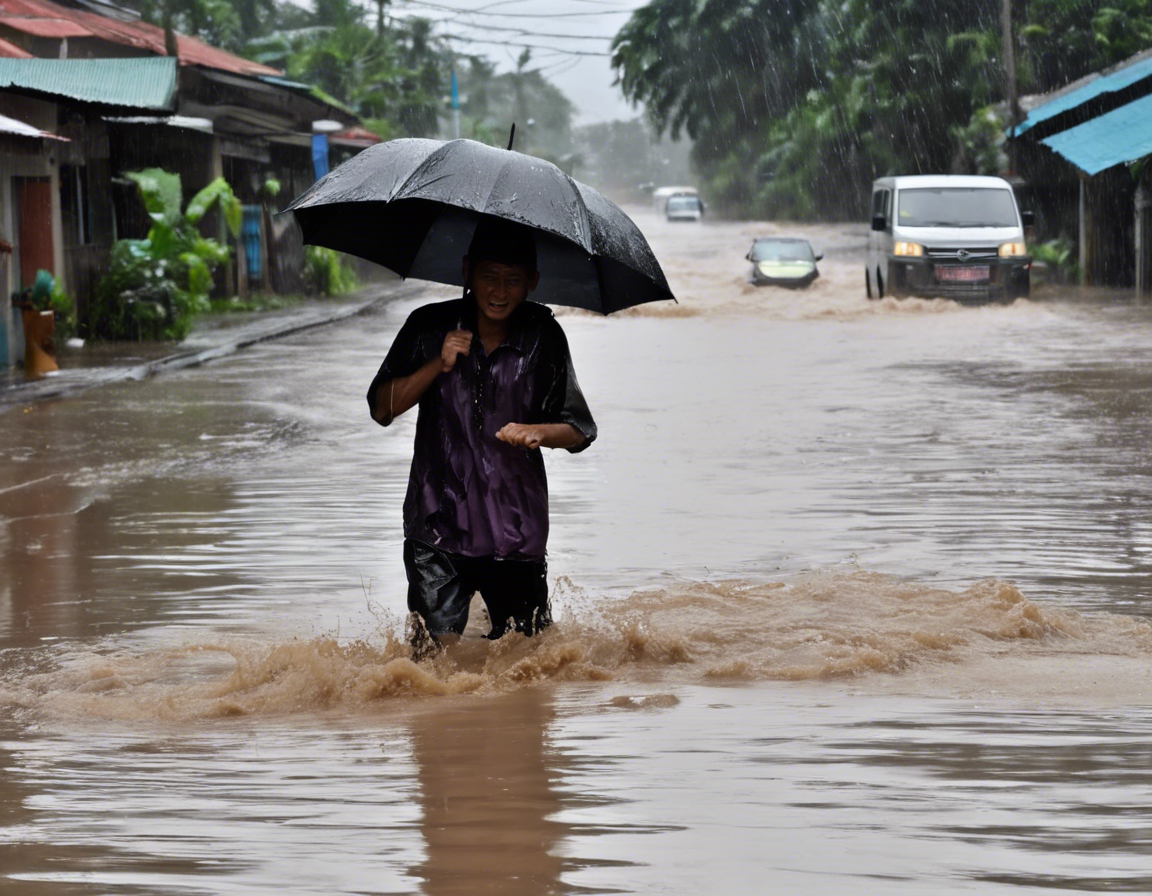Introduction
In recent news, Indonesia has been struck by devastating flash floods, triggered by heavy rains in several regions across the country. These natural disasters have caused widespread destruction, claiming lives, displacing families, and causing significant damage to infrastructure. The effects of these flash floods have been particularly severe in urban areas, where the overflow of rivers and poor drainage systems have exacerbated the impact of the heavy rainfall. This article will delve into the causes of flash floods in Indonesia, the regions most affected, the challenges faced by residents and authorities, and the importance of disaster preparedness and mitigation measures.
Causes of Flash Floods
Flash floods in Indonesia are primarily caused by intense and prolonged periods of heavy rainfall, which lead to the rapid overflow of rivers and the inundation of low-lying areas. The country’s tropical climate, with a high level of precipitation throughout the year, makes it susceptible to these weather events. Deforestation and land degradation have also played a significant role in exacerbating the impact of flash floods, as the loss of forest cover reduces the ability of the land to absorb and retain water.
Regions Most Affected
Some of the regions in Indonesia that have been most severely affected by the recent flash floods include Jakarta, West Java, East Java, and South Kalimantan. In Jakarta, the capital city, the flooding has been particularly devastating due to poor urban planning, inadequate drainage systems, and the rapid pace of urbanization. The densely populated nature of the city has made it especially vulnerable to the effects of extreme weather events.
Challenges Faced
The flash floods in Indonesia have presented a range of challenges for residents and authorities alike. Displaced families are in urgent need of shelter, clean water, food, and medical assistance. The destruction of infrastructure, including roads, bridges, and buildings, has hindered rescue and relief efforts. Furthermore, the risk of waterborne diseases and the spread of communicable illnesses is heightened in the aftermath of a natural disaster of this scale.
Disaster Preparedness and Mitigation
Effective disaster preparedness and mitigation measures are essential in reducing the impact of flash floods and other natural disasters in Indonesia. This includes investing in early warning systems, improving urban planning strategies, enhancing infrastructure resilience, and promoting sustainable land use practices. Community awareness and education about disaster risk reduction are also crucial in building resilience and enhancing response capabilities.
Frequently Asked Questions (FAQs)
1. What is a flash flood?
A flash flood is a rapid flooding event that occurs within a short period of time, often as a result of intense rainfall or the sudden release of water from a dam or levee.
2. What are the common causes of flash floods in Indonesia?
Flash floods in Indonesia are primarily caused by heavy rainfall, deforestation, land degradation, poor drainage systems, and rapid urbanization.
3. How can individuals prepare for a flash flood?
Individuals can prepare for a flash flood by staying informed about weather forecasts, creating an emergency plan, assembling a disaster supply kit, and knowing evacuation routes.
4. What should you do during a flash flood?
During a flash flood, it is essential to seek higher ground immediately, avoid walking or driving through floodwaters, and listen to emergency alerts and instructions.
5. How can communities mitigate the impact of flash floods?
Communities can mitigate the impact of flash floods by implementing proper land use planning, constructing resilient infrastructure, restoring natural hydrological systems, and promoting climate-resilient agriculture practices.
In conclusion, the recent flash floods in Indonesia serve as a stark reminder of the importance of disaster preparedness, sustainable development, and climate resilience. By addressing the underlying causes of flash floods, improving early warning systems, and enhancing community resilience, Indonesia can better mitigate the impact of future natural disasters and protect the lives and livelihoods of its residents.


